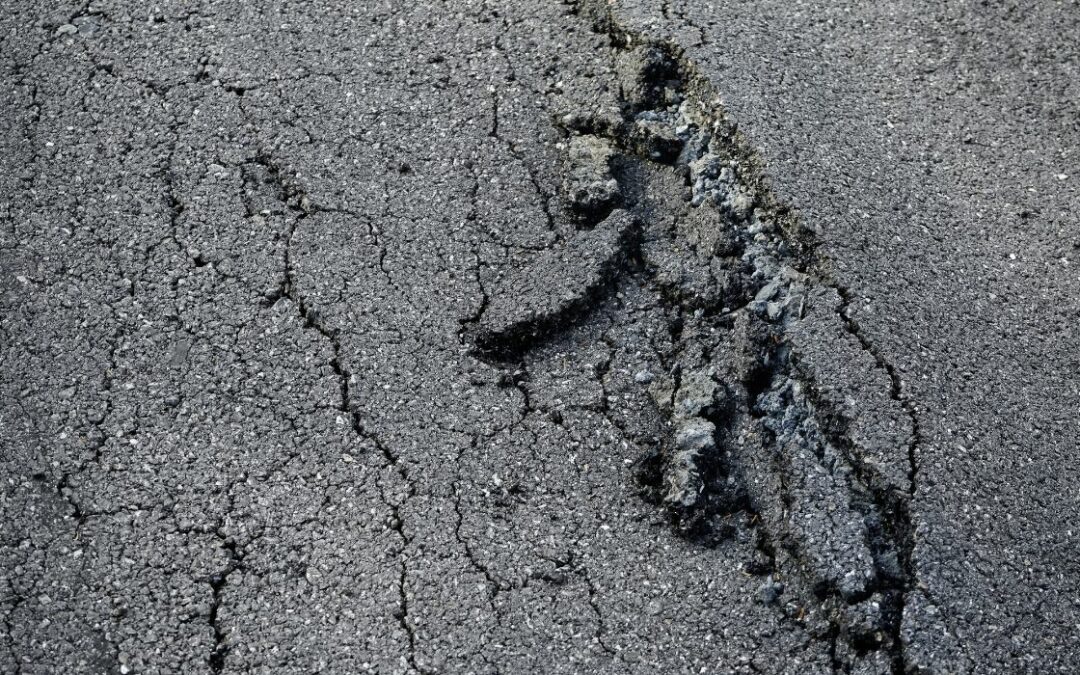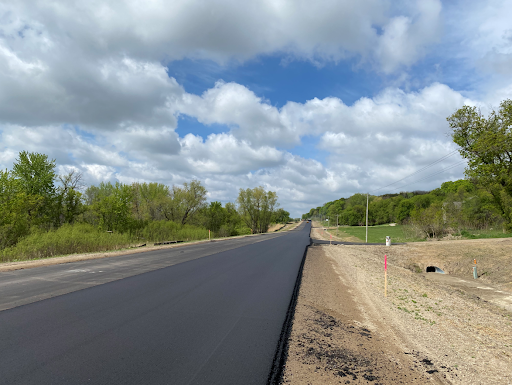Boost Aesthetic Allure and Capability: Hot Mix Asphalt for Regrading Projects
Boost Aesthetic Allure and Capability: Hot Mix Asphalt for Regrading Projects
Blog Article
Exploring the Environmental Advantages of Warm Mix Asphalt
The application of Warm Mix Asphalt in infrastructure jobs offers a compelling instance for lasting growth and environmental stewardship. By diving right into the elaborate information of its production processes and the ingenious use recycled materials, a deeper understanding emerges of exactly how this technology surpasses plain surface area applications. The ecological advantages of Hot Mix Asphalt extend much past first impressions, providing a nuanced point of view on just how this material can lead the way for a greener future.

Lowered Greenhouse Gas Emissions
The production procedure of Hot Mix Asphalt entails warming the combination of aggregate and asphalt binder to high temperatures. By including redeemed asphalt pavement and recycled asphalt tiles into the mix, the demand for virgin products is lowered, leading to power savings and decreased discharges linked with extraction and processing.
Researches have actually shown that Warm Mix Asphalt sidewalks have a smaller carbon impact over their life process compared to various other pavement choices. The durability and recyclability of Warm Mix Asphalt better improve its environmental benefits by lowering the need for frequent maintenance or substitute, thus preserving sources and lessening exhausts linked with reconstruction tasks.
Energy Effectiveness and Conservation
The production procedure of Hot Mix Asphalt not only decreases greenhouse gas exhausts yet also adds dramatically to power efficiency and preservation efforts. Energy efficiency is a vital benefit of Warm Mix Asphalt manufacturing contrasted to various other sidewalk types. The procedure involves heating up the products at high temperatures to develop the asphalt mix, which calls for less energy than alternate methods. In addition, the capacity to recycle and reuse asphalt pavement further improves power conservation. By incorporating recovered asphalt sidewalk (RAP) right into new blends, the sector saves power that would have been required to produce entirely new materials. Moreover, the toughness of Warm Mix Asphalt minimizes the frequency of maintenance and restoration, resulting in long-term energy savings. This durability minimizes the energy-intensive procedures associated with frequent repair services and replacements. Generally, Warm Mix Asphalt sticks out as an eco-friendly choice that focuses on power effectiveness and conservation throughout its lifecycle.
Lasting Pavement Solutions

One secret facet of lasting sidewalk options is using recycled materials such as recovered asphalt pavement (RAP) and recycled asphalt tiles (RAS) By including these materials right into the asphalt mixtures, the need for virgin sources is decreased, leading to reduced power consumption and greenhouse gas exhausts during manufacturing. Additionally, the reuse of these materials assists draw away waste from garbage dumps, adding to an extra round and lasting economic situation.
Additionally, sustainable sidewalk remedies concentrate on optimizing pavement layout to boost efficiency and long life. Methods such as cozy mix asphalt (WMA) and stone mastic asphalt (SMA) boost the durability and durability of pavements, minimizing the need for frequent repairs and replacements. By applying these innovative strategies, facilities programmers can develop sidewalks site that not only fulfill high-performance requirements but additionally decrease their environmental impact.
Minimized Environmental Effect
With an emphasis on sustainability and eco-conscious techniques, pavement services are created to lessen the ecological impact of building and construction and upkeep processes. Hot mix asphalt, specifically, provides a number of benefits that contribute to lowering the overall environmental footprint of roadway framework. One essential element is the recyclability of asphalt, which can be recycled multiple times without compromising its quality. This particular assists in conserving natural deposits and minimizing the quantity of waste sent to landfills.
Additionally, the production of warm mix asphalt discharges reduced degrees of greenhouse gases compared to other pavement products, making it a more eco-friendly choice. The power efficiency of asphalt plants has likewise enhanced throughout the years, leading to lowered gas intake and lower exhausts. In addition, the smooth surface of warm mix asphalt decreases rolling resistance for lorries, causing reduced gas usage and reduced air contamination from vehicle emissions.
Payment to Environment Change Reduction
Hot mix asphalt plays a crucial function in mitigating climate modification with its lasting residential or commercial properties and minimized ecological impact. One substantial payment to environment change mitigation comes from the power efficiency of hot mix learn this here now asphalt manufacturing. Contrasted to various other sidewalk options, the production process for warm mix asphalt eats much less power and releases lower degrees of greenhouse gases, therefore minimizing its overall carbon footprint.
Moreover, warm mix asphalt's capability to reflect sunlight, known as albedo, helps in decreasing city heat island effects. By minimizing warmth absorption and retention, warm mix asphalt sidewalks can decrease the need for air conditioning in urban areas, as a result reducing greenhouse gas discharges associated with energy usage for cooling down objectives.
Furthermore, the resilience and recyclability of warm mix asphalt further boost its climate modification reduction abilities. Regrading. The long life-span of asphalt pavements reduces the need for frequent repair work or substitutes, ultimately reducing the carbon emissions connected to road upkeep tasks. The recyclability of asphalt materials lessens the need for virgin sources and reduces the environmental effect of pavement building and construction, lining up with lasting practices for climate modification mitigation.
Final Thought
To conclude, the environmental advantages of Hot Mix Asphalt show its considerable contribution to minimizing greenhouse gas emissions, saving power, and minimizing ecological effect. This sustainable pavement option straightens with climate adjustment reduction initiatives, advertises resource preservation, and boosts infrastructure advancement. By using recycled products, energy-efficient manufacturing processes, and long lasting layout, Hot Mix Asphalt plays a vital function in cultivating a much more ecologically friendly approach to infrastructure construction.
The production process of Warm Mix Asphalt entails warming the mix of aggregate and asphalt binder to high temperatures. By including this contact form redeemed asphalt pavement and recycled asphalt tiles into the mix, the requirement for virgin materials is reduced, leading to energy financial savings and lowered exhausts associated with removal and handling.
One secret element of sustainable sidewalk options is the usage of recycled materials such as recovered asphalt pavement (RAP) and recycled asphalt roof shingles (RAS) Strategies such as cozy mix asphalt (WMA) and stone mastic asphalt (SMA) boost the sturdiness and resilience of sidewalks, minimizing the requirement for frequent fixings and replacements. Contrasted to various other pavement alternatives, the manufacturing process for hot mix asphalt eats much less energy and discharges reduced degrees of greenhouse gases, thus decreasing its general carbon impact.
Report this page